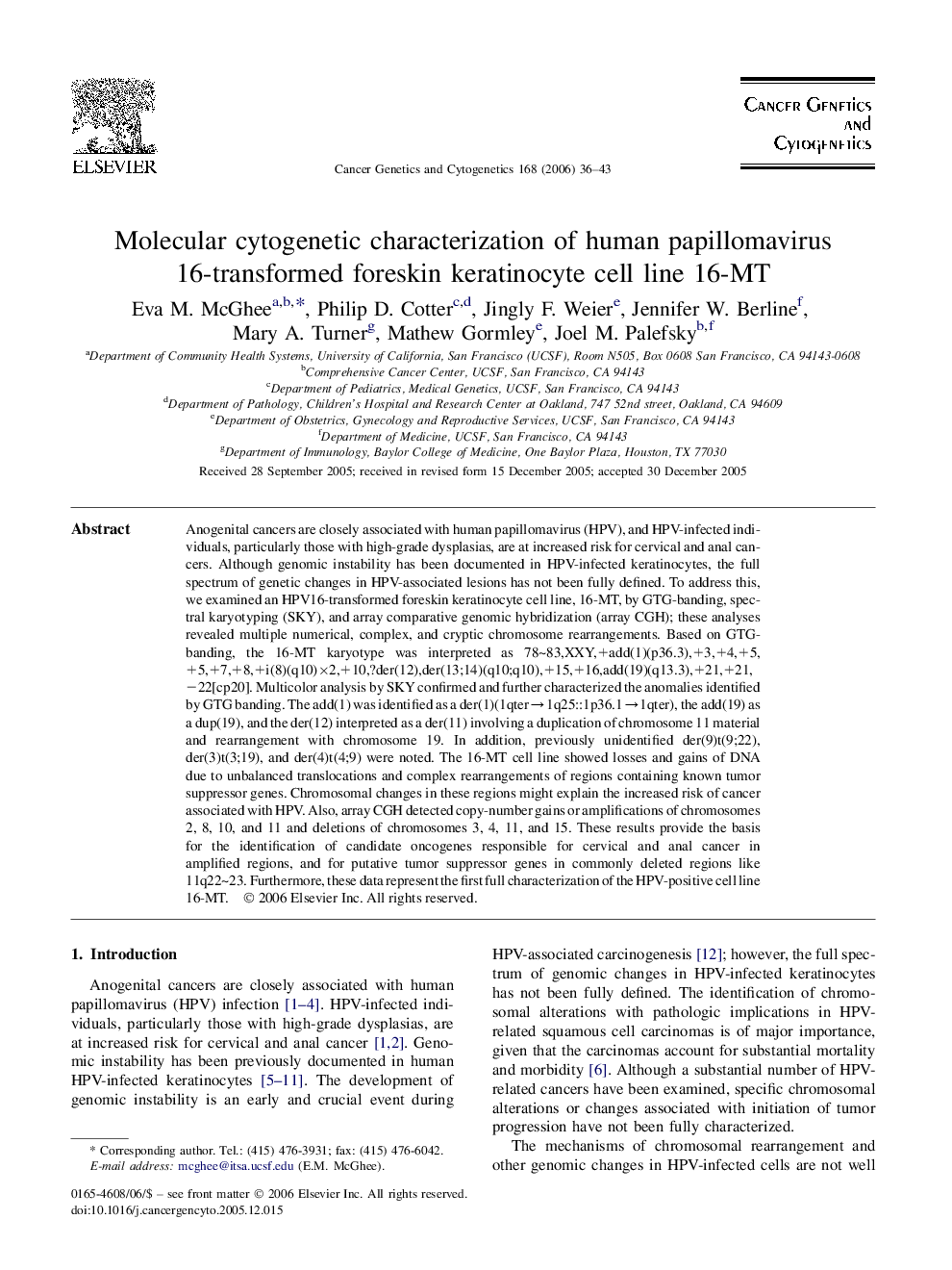| کد مقاله | کد نشریه | سال انتشار | مقاله انگلیسی | نسخه تمام متن |
|---|---|---|---|---|
| 2111917 | 1084006 | 2006 | 8 صفحه PDF | دانلود رایگان |

Anogenital cancers are closely associated with human papillomavirus (HPV), and HPV-infected individuals, particularly those with high-grade dysplasias, are at increased risk for cervical and anal cancers. Although genomic instability has been documented in HPV-infected keratinocytes, the full spectrum of genetic changes in HPV-associated lesions has not been fully defined. To address this, we examined an HPV16-transformed foreskin keratinocyte cell line, 16-MT, by GTG-banding, spectral karyotyping (SKY), and array comparative genomic hybridization (array CGH); these analyses revealed multiple numerical, complex, and cryptic chromosome rearrangements. Based on GTG-banding, the 16-MT karyotype was interpreted as 78∼83,XXY,+add(1)(p36.3),+3,+4,+5,+5,+7,+8,+i(8)(q10)×2,+10,?der(12),der(13;14)(q10;q10),+15,+16,add(19)(q13.3),+21,+21,−22[cp20]. Multicolor analysis by SKY confirmed and further characterized the anomalies identified by GTG banding. The add(1) was identified as a der(1)(1qter→1q25::1p36.1→1qter), the add(19) as a dup(19), and the der(12) interpreted as a der(11) involving a duplication of chromosome 11 material and rearrangement with chromosome 19. In addition, previously unidentified der(9)t(9;22), der(3)t(3;19), and der(4)t(4;9) were noted. The 16-MT cell line showed losses and gains of DNA due to unbalanced translocations and complex rearrangements of regions containing known tumor suppressor genes. Chromosomal changes in these regions might explain the increased risk of cancer associated with HPV. Also, array CGH detected copy-number gains or amplifications of chromosomes 2, 8, 10, and 11 and deletions of chromosomes 3, 4, 11, and 15. These results provide the basis for the identification of candidate oncogenes responsible for cervical and anal cancer in amplified regions, and for putative tumor suppressor genes in commonly deleted regions like 11q22∼23. Furthermore, these data represent the first full characterization of the HPV-positive cell line 16-MT.
Journal: Cancer Genetics and Cytogenetics - Volume 168, Issue 1, 1 July 2006, Pages 36–43